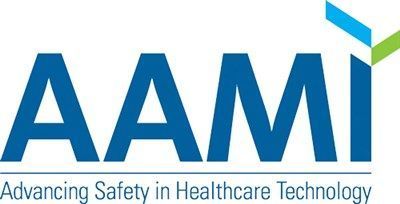
AAMI Releases Framework to Guide Benefit-Risk Assessments of Medical Devices on the Market
A new special report from AAMI lays out a framework for how the medical device industry and the FDA could embrace a new—and shared—way of thinking when it comes to considering the benefits and risks of products already on the market.
Fri Dec 09 2016

A new special report from AAMI lays out a framework for how the medical device industry and the Food and Drug Administration (FDA) could embrace a new—and shared—way of thinking when it comes to considering the benefits and risks of products already on the market.
The goal of the document is to make for a clearer and more efficient way of reaching corrective and removal decisions when a problem emerges with a device that is already being sold and used. The challenge of postmarket actions, especially product removals, has long been a source of contention between regulators and manufacturers.
The report—Postmarket Risk Management: A Framework for Incorporating Benefit-Risk Assessments into Correction and Removal Decisions—comes as the FDA has signaled a stronger interest in strengthening the postmarket observation of medical devices and at a time when the industry says there’s a need to streamline premarket decisions so innovative products can get to patients faster.
“In this environment, it is more important than ever that we have greater understanding and less acrimony,” said Mary Logan, who recently retired as the president and CEO of AAMI. “We saw a need for fresh perspectives and insights in considering how postmarket assessments ought to work. And, we realized that we needed to bring everyone together if we were going to find a meaningful and lasting solution.”
Working with the FDA, Logan convened a diverse working group of experts, including representatives from the agency, device manufacturers, a patient, and four industry trade associations, to tackle the challenge of developing a predictable and transparent process that could be used by the FDA and industry alike.
The framework is the product of 20 months of deliberations, drafts, and debates among members of the working group who sought to develop a practical and usable document that would delineate the steps and issues involved in a postmarket benefit-risk assessment and a potential recall.
Two fundamental principles guiding the group were the belief that a consideration of benefits is every bit as important as an evaluation of risks when it comes to deciding what to do with a device that is not performing as intended, and that a recall is not always the best solution to a problem.
“There may be scenarios that arise in which a manufacturer would consider removing the medical device from the market to correct the violation,” reads the introduction to the framework. ”However, sometimes that removal could adversely impact public health.” One example of this is implanted devices.
“Currently, there is little guidance on evaluating these scenarios in the postmarket setting,” the framework notes. “This report seeks to provide guidance to manufacturers as well as increase the transparency needed between FDA and manufacturers to reach a decision that is most beneficial to patients.”
The framework dovetails with a draft guidance document the FDA released in June that outlined benefit-risk factors to consider in decisions involving medical device availability, compliance, and enforcement. An earlier white paper from the AAMI/FDA working group about shared risk principles helped to inform that draft guidance and is being used to inform a planned revision of an international medical device standard, ISO 14971, which deals with the application of risk management to medical devices.
Both the draft version of the framework and the FDA’s draft guidance were put to the test this summer during an informal pilot. Eleven hypothetical recall events were developed by industry participants. Then, both industry and FDA regulators worked their way through the process, using both documents. In the end, seven of the “recall events” resulted in aligned thinking between the FDA and industry participants about what needed to be done, strongly suggesting that having a common understanding and a clear process paid off. Two of the events did not result in initial alignment, but the two sides agreed on a series of lessons learned.
“At the end of the day, this framework is about supporting both medical device innovation and patient safety,” said Chuck Sidebottom, a consultant who specializes in medical technology standards, a longtime AAMI volunteer, and primary editor of the special report. “Those two goals can be realized when industry and regulators share the same language, understand a common process, and communicate openly and effectively.”
Tony Carr, vice president of global quality systems at Boston Scientific and a member of the AAMI/FDA working group that developed the framework, hailed it as a valuable tool.
“Recall decision making is complex, and I hope publishing this framework will help improve the quality of decision making and help create a focal point for additional discussions to occur that will continue to improve the tools, understanding, and science behind this process,” Carr said.
A free copy of the framework can be downloaded at www.aami.org/benefitriskframework.
